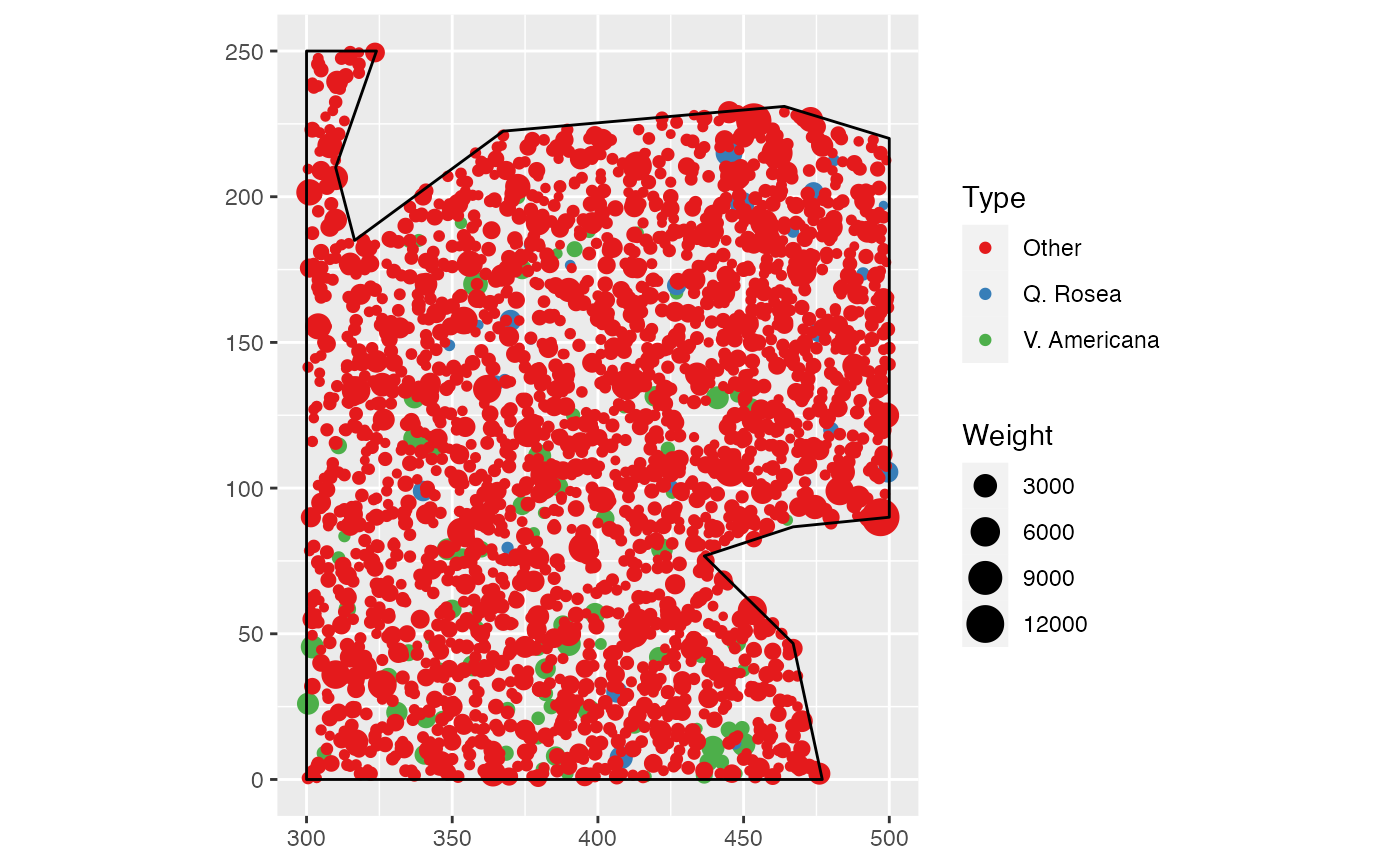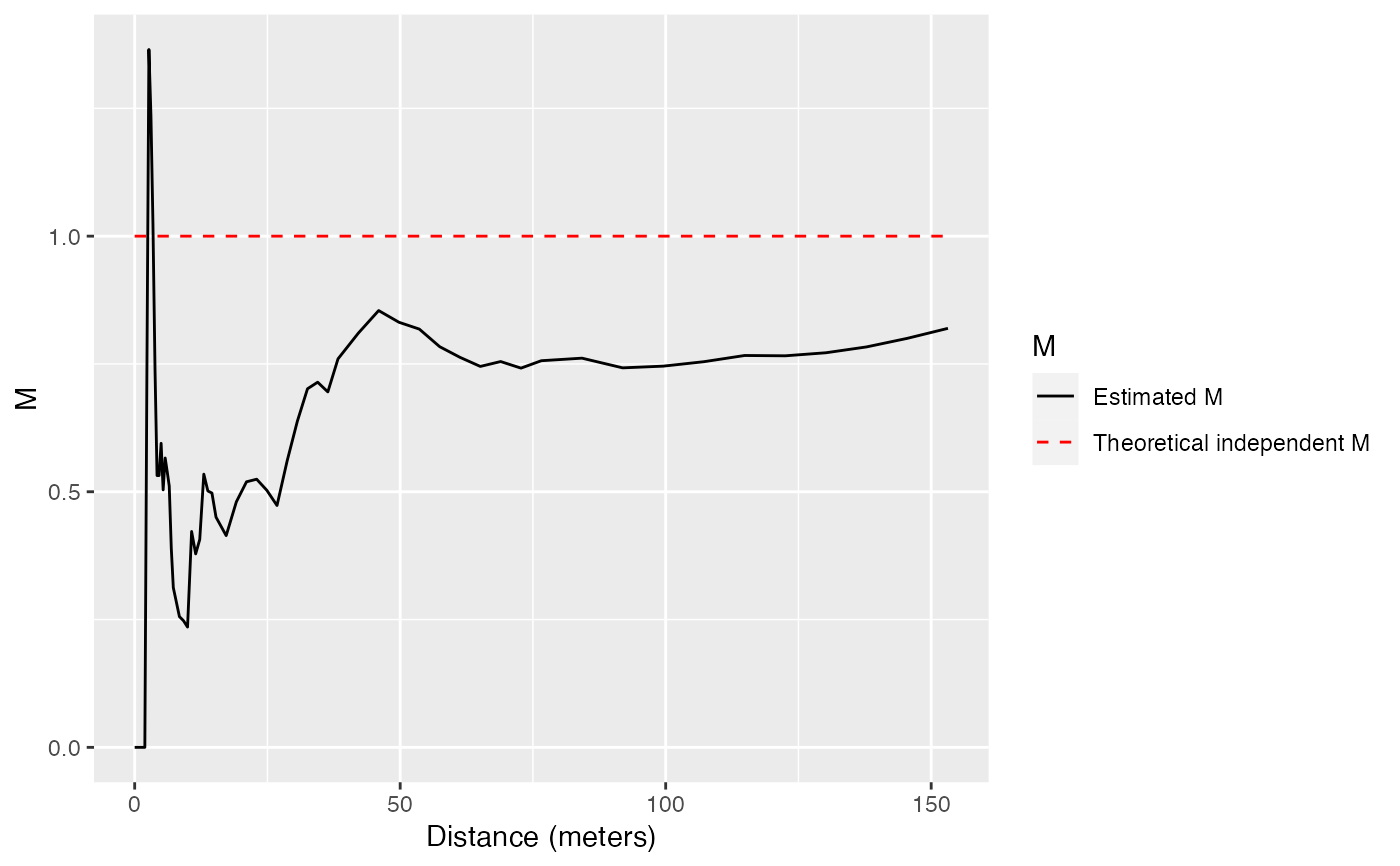
Estimation of the M function
Mhat.RdEstimates the M function
Usage
Mhat(X, r = NULL, ReferenceType, NeighborType = ReferenceType,
CaseControl = FALSE, Individual = FALSE, CheckArguments = TRUE)Arguments
- X
A weighted, marked planar point pattern (
wmppp.object) or aDtableobject.- r
A vector of distances. If
NULL, a default value is set: 64 unequally spaced values are used up to half the maximum distance between points \(d_m\). The first value is 0, first steps are small (\(d_m/800\)) then increase progressively up to \(d_m/40\).- ReferenceType
One of the point types.
- NeighborType
One of the point types. By default, the same as reference type.
- CaseControl
Logical; if
TRUE, the case-control version of M is computed. ReferenceType points are cases, NeighborType points are controls.- Individual
Logical; if
TRUE, values of the function around each individual point are returned.- CheckArguments
Logical; if
TRUE, the function arguments are verified. Should be set toFALSEto save time in simulations for example, when the arguments have been checked elsewhere.
Details
M is a weighted, cumulative, relative measure of a point pattern structure. Its value at any distance is the ratio of neighbors of the NeighborType to all points around ReferenceType points, normalized by its value over the windows.
If CaseControl is TRUE, then ReferenceType points are cases and NeighborType points are controls. The univariate concentration of cases is calculated as if NeighborType was equal to ReferenceType, but only controls are considered when counting all points around cases (Marcon et al., 2012). This makes sense when the sampling design is such that all points of ReferenceType (the cases) but only a sample of the other points (the controls) are recorded. Then, the whole distribution of points is better represented by the controls alone.
Value
An object of class fv, see fv.object, which can be plotted directly using plot.fv.
If Individual is set to TRUE, the object also contains the value of the function around each individual ReferenceType point taken as the only reference point. The column names of the fv are "M_" followed by the point names, i.e. the row names of the marks of the point pattern.
References
Marcon, E. and Puech, F. (2010). Measures of the Geographic Concentration of Industries: Improving Distance-Based Methods. Journal of Economic Geography 10(5): 745-762.
Marcon, E., F. Puech and S. Traissac (2012). Characterizing the relative spatial structure of point patterns. International Journal of Ecology 2012(Article ID 619281): 11.
Marcon, E., and Puech, F. (2017). A Typology of Distance-Based Measures of Spatial Concentration. Regional Science and Urban Economics 62:56-67

